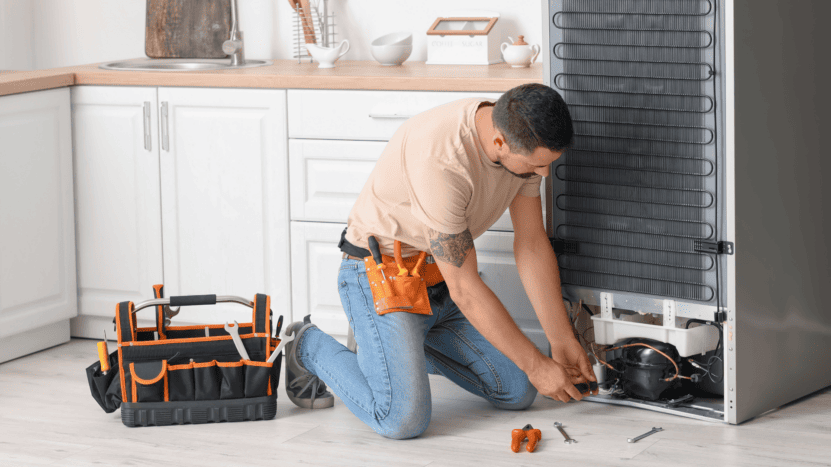Have you ever felt the itch to try your hand at house flipping, inspired by the countless home transformation shows on HGTV? Real estate investment can indeed be a rewarding venture when approached with finesse. As a novice investor, however, it’s crucial to acquaint yourself with some fundamental concepts before diving headfirst into the world of property renovation. One of the most pivotal terms you need to grasp is ARV, or After-Repair Value.
ARV is a critical factor that unveils valuable insights for both buyers and sellers in the real estate market. But what exactly is ARV in real estate? In this article, we will demystify the concept of ARV, delve into how it operates in the realm of real estate, and explore its significance for house flippers.
Understanding After-Repair Value (ARV) In Real Estate
ARV is an abbreviation for “after-repair value,” denoting the estimated value of a property after undergoing repairs or renovations, rather than its current state. Real estate investors utilize this metric to ensure they maximize their investment returns.
When engaging in house flipping, real estate investors must meticulously evaluate the return on investment for fixer-upper properties. Calculating ARV is an integral part of determining the ROI when reselling a property post-renovation.
How Does ARV Work
The concept of ARV extends benefits to both buyers and sellers within the real estate market. It equips potential investors and buyers with the essential background information required to make well-informed decisions concerning the project’s scope and the value of their investment.
For those seeking to sell an investment property, leveraging ARV can help determine the necessary repairs that would boost the property’s value for prospective buyers.
The ARV calculation involves a process of assessing comparable properties, estimating renovation costs, applying the ARV formula, and ultimately deciding which repairs offer a favorable return on investment.
How to Calculate ARV
To maximize the potential of your real estate investment, you can follow a series of steps to calculate the after-repair value, ensuring that your project is a worthwhile pursuit from the outset.
However, it’s essential to note that calculating ARV is a complex task that requires in-depth research into various aspects, including the property’s locale, repair expenses, and the prevailing housing market conditions. For prospective property buyers, the following steps can guide you in determining ARV and mitigating investment risks:
- Examine Comparable Properties: Begin by scrutinizing comparable properties, often referred to as “comps,” when calculating ARV. It’s advisable to collaborate with a real estate agent who can provide a Comparative Market Analysis (CMA). A CMA leverages data from the Multiple Listing Service (MLS), a private database containing information about homes in specific geographic areas. This analysis estimates a home’s value by comparing it to recently sold properties in the vicinity, factoring in attributes such as square footage, age, size, architectural style, and other relevant variables. CMAs play a crucial role in helping sellers set appropriate prices for their homes on the market. The CMA assists in determining the current value of a property before factoring in any repairs.
- Estimate Renovation Costs and Additional Expenses: The next step involves estimating renovation costs and accounting for other associated expenses when calculating ARV. Obtaining accurate estimates for repairs from a licensed contractor is pivotal, as these figures will significantly impact your ARV. In addition to renovation costs, you should also consider expenses such as:
- Property taxes: Local governments levy property taxes on property owners to fund various taxpayer services, including road maintenance and school upgrades. It’s advisable to check with county offices to gain insights into property tax rates.
- Insurance: Homeowner’s insurance covers protection against various hazards. You can estimate homeowner’s insurance based on replacement cost coverage, with most insurance companies requiring homeowners to secure coverage worth at least 80% of their property’s replacement cost.
- Homeowners Association (HOA) fees: HOAs play a role in preserving neighborhood aesthetics and quality by monitoring home maintenance. They charge fees for these services, and the fee amounts can vary based on your chosen area. It’s essential to inquire about HOA fees before embarking on property renovation.
- Utilities: Utility costs can sometimes be unexpectedly high. These expenses encompass telecommunications, electricity, natural gas, and more. Request recent utility bills from the seller and assess whether you plan to pass on any of these costs to renters.
- Calculate the ARV: Once you’ve gathered the aforementioned information, apply the ARV formula to ascertain your costs. ARV is calculated as the sum of the property’s purchase price and the estimated repair costs.
ARV = Purchase Price + Value of Repairs
For example, let’s consider a property with a current value of $250,000, and the anticipated repair costs are $25,000:
ARV = $250,000 + $25,000
ARV = $275,000
It’s worth noting that you should be prepared for unforeseen expenses, particularly when dealing with fixer-upper properties. Issues lurking beneath the surface, such as mold remediation or termite treatment, can significantly alter the renovation cost estimate and potentially elevate the ARV of your property.
Exploring the 70% Rule
Industry experts often recommend adhering to the 70% rule when undertaking flipping projects. In simple terms, this rule suggests that the initial purchase price should not exceed 70% of the ARV minus the estimated repair costs. Following this rule serves as a safeguard to ensure a minimum 30% return on your investment.
Maximum Offer Price = 70% of ARV – Repair Costs
For instance, let’s assume a property has an ARV of $250,000 after repairs, and a contractor estimates the repair expenses at $50,000. In this scenario:
Maximum Offer Price = ($250,000 x 0.70) – $50,000
Maximum Offer Price = $175,000 – $50,000
Maximum Offer Price = $125,000
It’s important to note that the lower your purchase price, the greater your profit potential. While the 70% rule is a standard practice in real estate, some individuals may consider paying up to 80% of the ARV, depending on prevailing market conditions.
Considerations and Limitations of ARV
While ARV is a valuable tool in real estate, it’s essential to acknowledge its limitations and potential drawbacks when evaluating a property’s value:
- Estimate Only: It’s crucial to understand that ARV is an estimate. An appraiser may ultimately determine a property’s value to be lower than anticipated. An appraisal involves a thorough assessment by a professional appraiser who examines the property and provides a valuation, which may differ from the listing price. If the appraisal value falls short, lenders may be unwilling to extend a loan for the property beyond its appraised value. In such cases, you may find yourself dealing with a property that requires repairs you hadn’t initially planned for.
- Market Fluctuations: ARV calculations do not account for shifts in the housing market. The overall housing market exerts a considerable influence on property values. Factors such as the number of homes available for sale in a particular area and the demand from buyers can impact the value of the property you’re considering renovating. A high demand and limited supply create a seller’s market, while an oversupply of homes and fewer buyers result in a buyer’s market.
- Incomplete Consideration: ARV does not encompass every facet of real estate investment. It overlooks factors such as the property’s location, desirability of the neighborhood, nearby schools, crime rates, transportation accessibility, potential for rent appreciation, and more. These variables also play a pivotal role in determining a property’s overall attractiveness and potential return on investment.
ARV Questions? Contact JVM Lending
JVM Lending stands as the expert in guiding clients through the intricate mortgage process, offering invaluable advice on real estate investments, and possessing a team with an unparalleled and comprehensive understanding of After-Repair Value (ARV) in real estate.
With our unwavering commitment to excellence and a track record of empowering clients to make sound financial decisions, JVM Lending is your trusted partner on your journey towards successful real estate endeavors.
If you’re thinking of doing significant repairs on a home and want to learn more about your property’s ARV, feel free to contact JVM’s team of experts!






